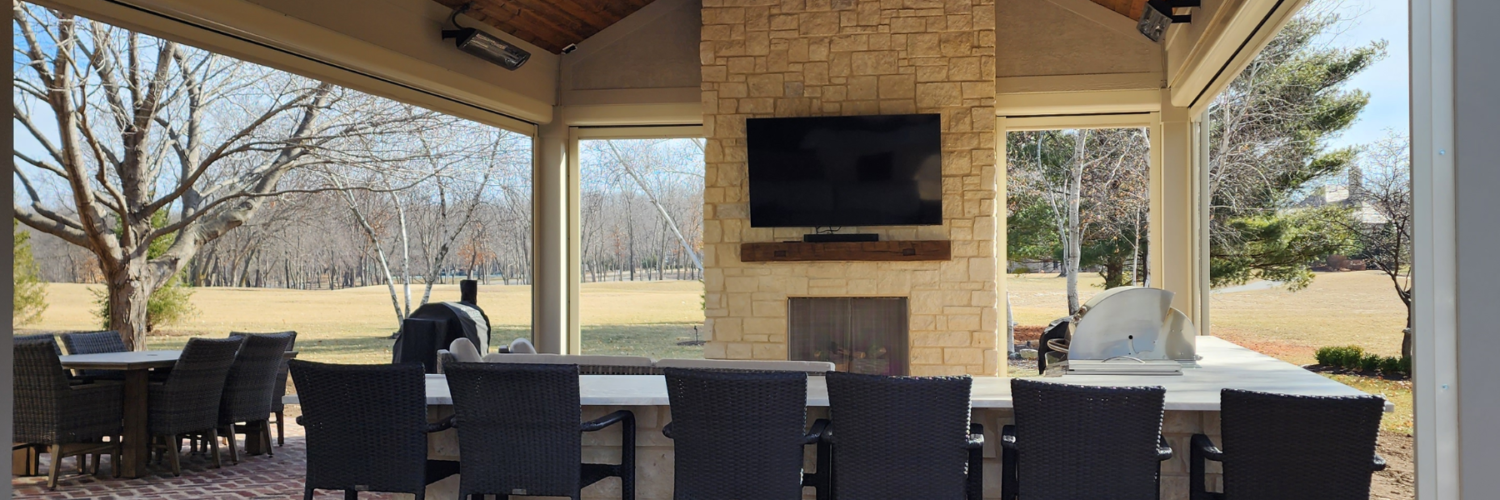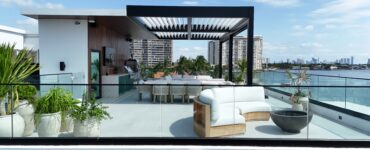As the weather gets warmer, people have a tendency to enjoy the outdoors more. Adding to this is the fact that during the pandemic eating outdoors was the only way restaurants could serve their patrons. Almost three years later, many restaurants have kept an outdoor space for customers that enjoy the fresh air.
After doing a quick survey through several Facebook installation groups, the trend is confirmed: Outdoor shades are on the rise. I witness daily posts of completed installations, searches for installers or recommendations for outdoor products manufacturers.
But before you jump on the outdoor shades bandwagon to offer them, there are some major differences between interior and exterior products, including sizes, installation time and variety of tools. I will highlight a few things that you must consider before incorporating these products into your portfolio.
SIZE: While most interior products are measured in inches, exterior shades are usually measured in feet. That alone is an indicator that 99% of the installs won’t be handled by a single installer. Not only does size matter, but weight too. Because these shades cover greater open spaces such as patio doors, balconies and commercial windows, their components must be oversized for best performance. For instance, while a huge interior shade would use a 2-inch-diameter tube, it is very common to see 3- to 5-inch-diameter tubes for outdoor products. All those extras make exterior products extremely heavy. In most cases, three would be the minimum crew to handle such projects.
TOOLS: With interior shades, many times you can walk into a house with a drill and some screws and that’s it. With exterior products, you have to be prepared with a large assortment of hand tools, power tools and even electrical tools and connectors. Tim Sanders, president of Solar Shield. Blinds, Shades, Solutions., said, “In our early days of installing exterior shades, we would have to stop and go get tools or materials as we ran into unforeseen circumstances. Now, we have a very good assortment, but it takes way more time at the beginning of the install just prepping the area and getting our tools ready versus any type of interior install.”

WEATHER: Most of our interior installations are done amid the perfect temperature. Regardless of the temps outside, we have air conditioning or a heater in the room to make us cozy. That isn’t the case when installing products outdoor. The vast majority of projects will be done in the Southern states and you may face extreme heat while installing; however, freezing temperatures could be just as bad. I recently installed a project in Marlborough, MA, when the temperature was 27 degrees. Every 30 minutes or so, we had to go back to our van to warm up. Something else to consider: Under freezing temperatures, there is always a chance that the ground may be icy and a bit unstable.
MENTALLY FIT: There are so many different variables when it comes to exterior zipper shades, so before you can even really get started installing, you have to have a plan for each one of those steps. Unlike interior shades that you can easily snap in and out of a window, exterior shades are a very different animal and having to redo something can take up valuable time and energy. Sanders continued,
“It’s very possible if you do something out of order, you will lose even more time by having to backtrack and uninstall something because you missed a step. So, you just have to approach these installs differently and think through each step before you do it. They require a lot more muscle and way more patience. You have to be mentally prepared and allow plenty of time.”
MOUNTING: Most indoor installations can be accomplished using small screws, wall plugs or toggle bolts. However, when it comes to outdoor products, the structures that are supporting the product must be SOLID and same with the fasteners that you use. In many instances, you will face a steel beam designed to hold such products. Again, extra time, proper planning and the correct tools are vital to succeed.
PRICE: On average, installers charge between $20 to $30 per interior shade unit that takes about 15 minutes to install. Meanwhile, $200 may sound enticing as a dollar figure, but it is not even a reasonable amount if you don’t account for the time and labor involved. Some of the seasoned installers I know won’t even consider $400 per unit given the work involved. So, make sure to price accordingly if you are considering this category.
INSURANCE: Before you start advertising your new services, consult your insurance agent to make sure that you are covered. Remember you’ll need extra hands and additional tools and will be dealing with more expensive products and installing them on exterior structures. A misstep can be very costly if you don’t have the proper insurance.
To conclude, I think Tim Sanders summarized it best when he said, “Even though there are some stark differences in the install processes from interior to exterior shades, the reward at the end of a job well done is still very fulfilling. The function and added benefits exterior shades provide our clients makes all the extra work worth it in the end.”
 Roger Magalhaes is the founder of Trading Up Consulting, which provides installation training for window fashion professionals. Magalhaes has more than 15 years of experience as a professional window treatment installer in the Boston area. He is also the installation instructor for the Window Fashion Certified Professional FastTrack program and is the president of Window Coverings Association of America.
Roger Magalhaes is the founder of Trading Up Consulting, which provides installation training for window fashion professionals. Magalhaes has more than 15 years of experience as a professional window treatment installer in the Boston area. He is also the installation instructor for the Window Fashion Certified Professional FastTrack program and is the president of Window Coverings Association of America.




